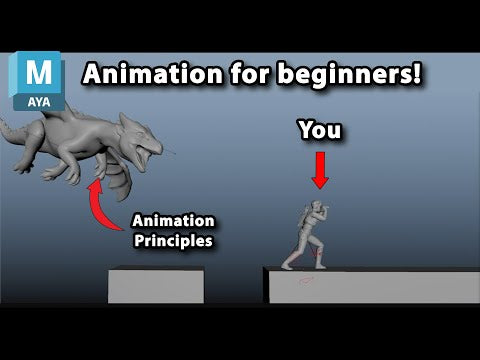Your Cart is Empty
Customer Testimonials
-
"Great customer service. The folks at Novedge were super helpful in navigating a somewhat complicated order including software upgrades and serial numbers in various stages of inactivity. They were friendly and helpful throughout the process.."
Ruben Ruckmark
"Quick & very helpful. We have been using Novedge for years and are very happy with their quick service when we need to make a purchase and excellent support resolving any issues."
Will Woodson
"Scott is the best. He reminds me about subscriptions dates, guides me in the correct direction for updates. He always responds promptly to me. He is literally the reason I continue to work with Novedge and will do so in the future."
Edward Mchugh
"Calvin Lok is “the man”. After my purchase of Sketchup 2021, he called me and provided step-by-step instructions to ease me through difficulties I was having with the setup of my new software."
Mike Borzage
Design Software History: Mastercam’s Evolution: Transforming CNC Machining Through Innovation and Accessibility
August 25, 2024 4 min read


I. Introduction to Mastercam and its Historical Context
CNC (Computer Numerical Control) machining represents a key technology in modern manufacturing. It involves the use of computers to control machine tools such as lathes, mills, routers, and grinders. This allows for highly precise and automated production processes, which are critical in industries ranging from automotive and aerospace to electronics and medical devices.
Mastercam stands as a pivotal software in the CNC industry, offering comprehensive solutions for the design and manufacturing of parts. Developed by CNC Software, Inc., Mastercam provides a range of capabilities that have significantly influenced machining processes globally. The software's impact is particularly notable in its contribution to automation, precision, and efficiency in manufacturing.
Before the advent of Mastercam, machining was a largely manual process, often limited by the skill and experience of individual machinists. Early CNC systems were complex and required specialized knowledge to operate, making them inaccessible to many smaller manufacturers. The introduction of user-friendly CAM (Computer-Aided Manufacturing) software like Mastercam marked a turning point, democratizing access to advanced machining capabilities and paving the way for greater innovation and productivity in the industry.
II. The Early Days: Development and Key Innovations
CNC Software, Inc., the company behind Mastercam, was founded in 1983 by Mark Summers and Jack Simons. Their vision was to create a powerful yet easy-to-use CAM software that could cater to the needs of machinists and engineers alike. This vision was driven by the desire to simplify the programming of CNC machines and make advanced machining technology more accessible to a broader audience.
In its early days, CNC Software, Inc. faced numerous challenges, including limited computational power and a nascent market for CAM software. Despite these hurdles, the founders remained committed to their goal, working tirelessly to develop a product that would meet the demanding needs of the industry.
The first versions of Mastercam were groundbreaking in their own right. Released in the mid-1980s, these early iterations offered basic CAD (Computer-Aided Design) and CAM functionalities, allowing users to design parts and generate toolpaths for CNC machines. Even at this early stage, Mastercam differentiated itself with its user-friendly interface and robust feature set, which included 2D machining capabilities and basic 3D modeling tools.
Over time, Mastercam introduced several key innovations that set it apart from other CAM software available at the time:
- User-friendly interface: Mastercam was designed with the user in mind, featuring an intuitive interface that made it accessible to machinists with varying levels of experience. This focus on usability helped the software gain a wide following in the industry.
- Integrated CAD/CAM capabilities: Unlike many other tools that required separate software for design and manufacturing, Mastercam combined these functionalities into a single package. This integration streamlined the workflow, reducing the complexity and time required to move from design to production.
III. Mastercam's Influence on CNC Machining
As Mastercam continued to evolve, its adoption spread across various industries, including automotive, aerospace, medical, and consumer electronics. Companies in these sectors leveraged Mastercam's capabilities to enhance their manufacturing processes, achieving greater precision and efficiency in their operations.
One of Mastercam's most significant contributions to CNC machining is its ability to improve the efficiency and precision of the machining process. By offering advanced toolpath strategies and simulation tools, Mastercam enables users to optimize their machining operations, reducing cycle times and minimizing material waste.
Over the years, Mastercam has continually expanded its feature set to meet the evolving needs of the industry. Some notable advancements include the introduction of:
- 3D machining: This feature allowed users to create complex 3D models and generate toolpaths for intricate geometries, significantly expanding the range of parts that could be machined using Mastercam.
- Multi-axis machining: By supporting multi-axis operations, Mastercam enabled users to machine parts with greater complexity and precision, opening up new possibilities for advanced manufacturing techniques.
These innovations have cemented Mastercam's position as a leading CAM software, trusted by manufacturers worldwide to deliver high-quality, precise, and efficient machining solutions.
IV. The Future of Mastercam and CNC Machining
Today, Mastercam continues to evolve, with the latest versions offering a host of new features and improvements. These enhancements include better integration with modern manufacturing technologies, such as the Internet of Things (IoT), artificial intelligence (AI), and machine learning. By leveraging these advanced technologies, Mastercam aims to further enhance the capabilities of CNC machining, driving the industry towards greater automation, efficiency, and precision.
Looking ahead, Mastercam is poised to play a crucial role in the future of CNC machining. As the industry continues to evolve, several trends and innovations are expected to shape its trajectory, including:
- Increased automation: With the integration of AI and machine learning, CNC machining is expected to become more automated, reducing the need for manual intervention and enabling greater consistency and accuracy in production.
- Enhanced connectivity: The adoption of IoT technologies will allow for better data collection and analysis, enabling manufacturers to optimize their processes and improve overall efficiency.
Mastercam's commitment to innovation and its ability to adapt to emerging trends will ensure its ongoing relevance in the CNC industry. By continuing to develop cutting-edge features and capabilities, Mastercam will remain a key player in the CNC revolution, helping manufacturers achieve new levels of productivity and precision in their operations.
In conclusion, the legacy of Mastercam in the CNC machining industry is one of innovation, accessibility, and excellence. From its humble beginnings to its current status as a leading CAM software, Mastercam has consistently pushed the boundaries of what is possible in machining. As the industry continues to evolve, Mastercam's ongoing contributions will undoubtedly shape the future of CNC machining, driving advancements that will benefit manufacturers and consumers alike.
Also in Design News

Animation for Beginners - Part 2: 12 Animation Principles you NEED to know
January 14, 2025 1 min read
Read More
ZBrush Tip: Enhancing 3D Model Precision with ZBrush's TrimCurve Tool
January 14, 2025 2 min read
Read More
Revit Tip: Utilizing Design Phases to Enhance Revit Project Efficiency and Collaboration
January 14, 2025 1 min read
Read MoreSubscribe
Sign up to get the latest on sales, new releases and more …


